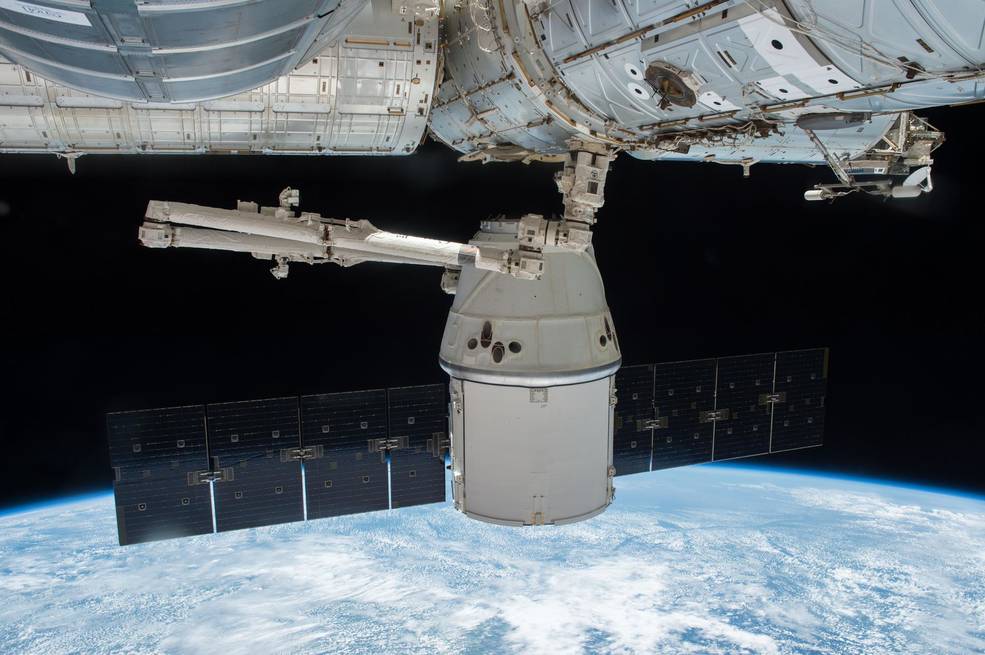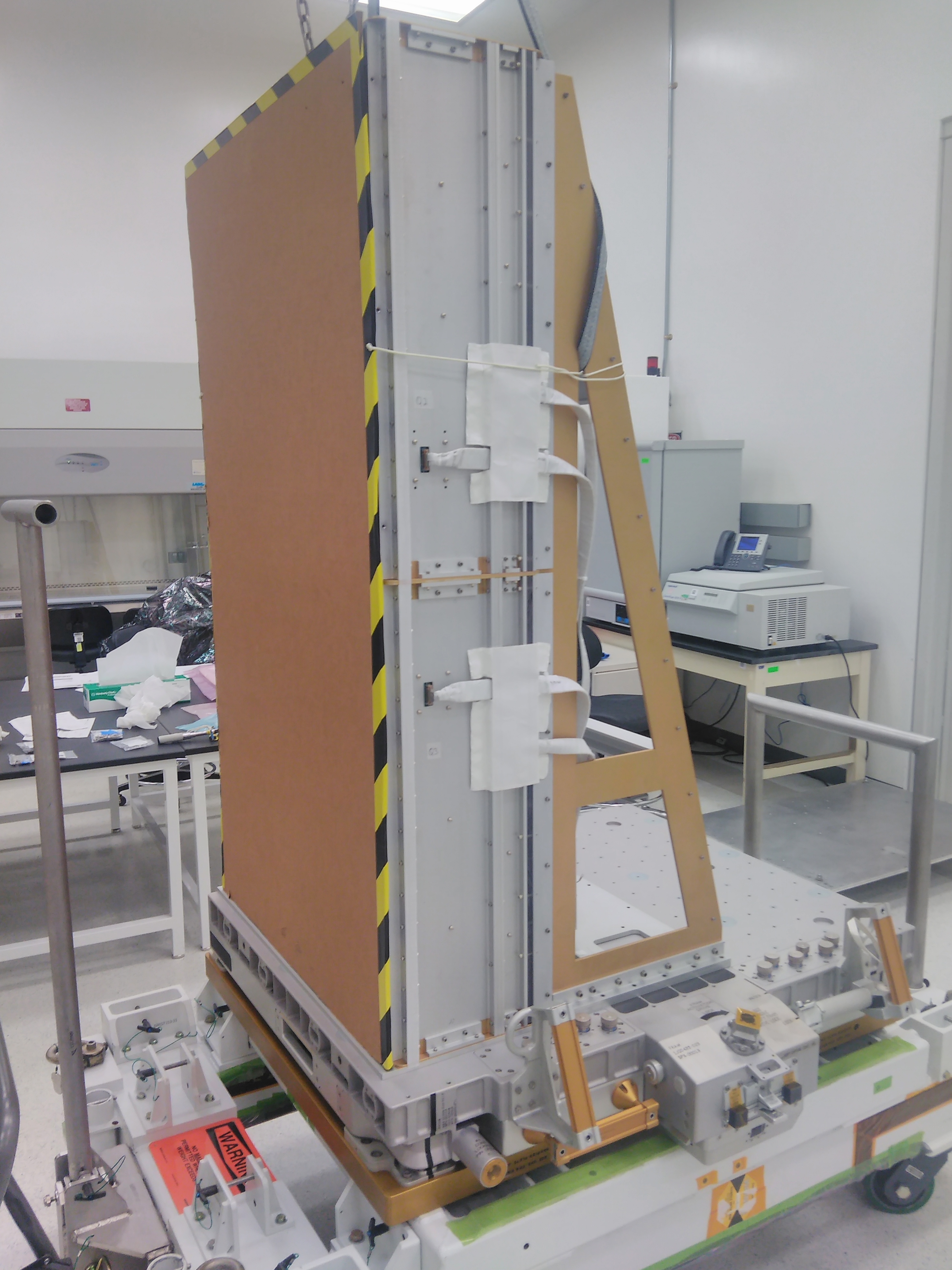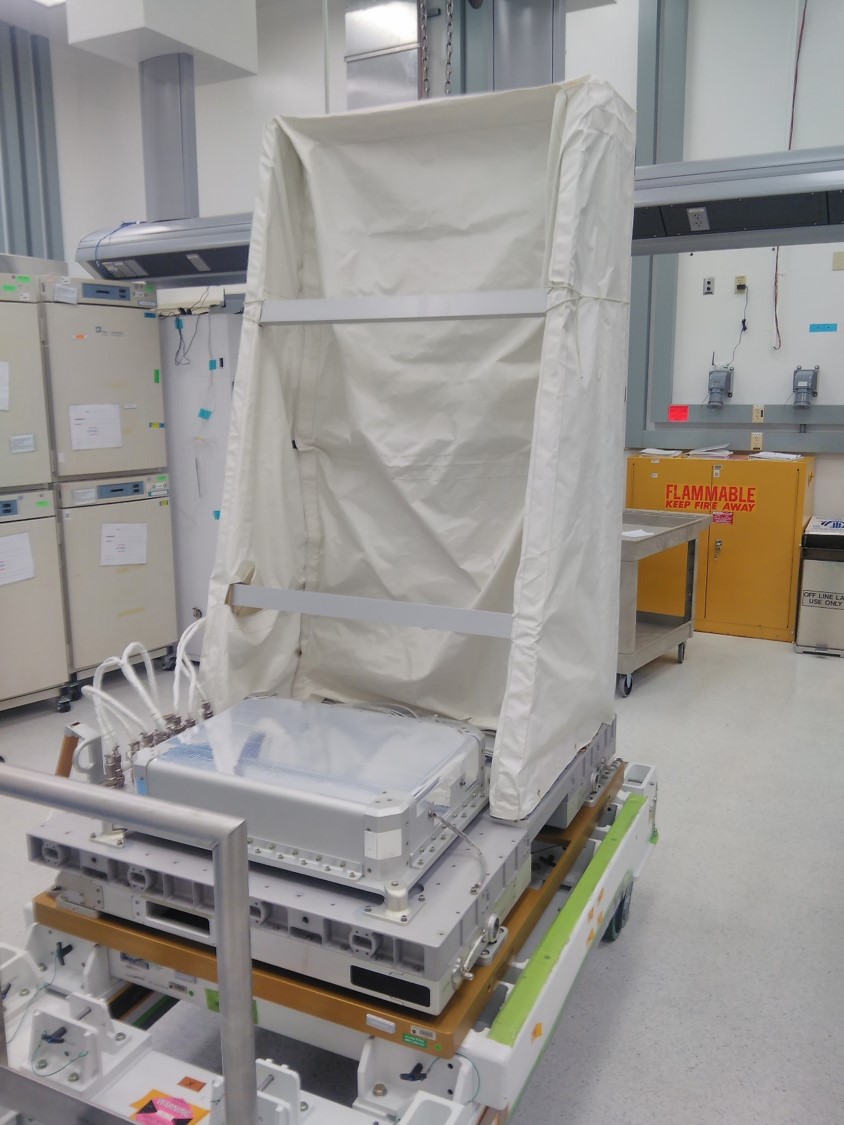Tiny Space-Debris Detector Will Fly to Station This Week

How many tiny bits of space debris are pummeling the International Space Station day after day? A new experiment headed into orbit this week will find out.
NASA's Space Debris Sensor is scheduled to launch aboard a SpaceX Dragon cargo capsule on Tuesday (Dec 12). The sensor is designed to gather data on micrometeoroids and pieces of space debris, each about the size of a sand grain — far too small to be tracked from the ground. The sensor will reveal how frequently these bits of material collide with the station, how fast they are moving when they hit and the direction they came from.
While a few grains of sand pelting a window might not pose a threat on Earth, even miniature bits of space debris can be hazardous in orbit. These objects typically move through space at speeds ranging from 6.2 to 8.6 miles per second (10 to 14 kilometers per second), according to Joseph Hamilton, principal investigator for the Space Debris Sensor at NASA. That means the particles carry enough energy to damage satellites or leave small cracks on space station windows. [Space Junk Clean Up: 7 Wild Ways to Destroy Orbital Debris]
"We pay close attention to the risk involved with debris," Hamilton said during a teleconference on Nov. 29.

The terms "space debris" and "space junk" refer to unused objects and material orbiting the Earth; this can include derelict satellites and much smaller bits of debris from in-space collisions, usually between satellites, or satellites and missiles. With very small objects, the effect of a collision will depend on many factors, such as the object's speed and density, Hamilton said, but these impacts can threaten astronaut safety even if they don't penetrate the station itself.
"Even small debris less than a millimeter [in diameter] can impact, say, a handrail and create a crater with sharp edges on it," Hamilton said. If an astronaut reaches for that handrail during a spacewalk, the sharp edge could damage his or her spacesuit.
A three-layer system
The Space Debris Sensor is a flat square, about 3.3 feet on each side (1 meter square) and about 20 centimeters (8 inches) thick. It will be attached to the outside of the Columbus External Payload Facility and is intended to operate for at least two years, Hamilton said. It will help researchers build models used to anticipate how frequently a satellite or space station will be hammered by tiny bits of material, he said.
Get the Space.com Newsletter
Breaking space news, the latest updates on rocket launches, skywatching events and more!
The instrument consists of three layers; the first two are soft so objects can penetrate them. By measuring the time it takes for the object to pass from the first layer to the second layer, the instrument can determine the object's speed, Hamilton said during the teleconference.

The layers are made of a material that can carry an electrical current, so a disruption to the current reveals that an object has passed through the material. That information can then be sent to the ground in real time. The third, sturdier layer will stop the object and measure the energy in the collision.
In total, the sensor will be able to tell scientists the size, density and velocity of an impacting object. The instrument will also reveal if the object was a micrometeoroid coming from space or a piece of space debris orbiting the planet, as well as if the object was in a circular or elliptical orbit.
The sensor can detect pieces of space debris that are less than 0.039 inches (1 mm) wide. The smallest objects the instrument can detect are 0.0019 inches (0.05 mm) wide. Ground sensors can detect pieces of debris that are larger than about 4 inches (10 cm) wide.
While Hamilton said "dust detectors" have flown in space before to study small pieces of space debris, this is the first instrument "that combines all these types of techniques to try to get this kind of information."
Follow Calla Cofield @callacofield. Follow us @Spacedotcom, Facebook and Google+. Original article on Space.com.
Join our Space Forums to keep talking space on the latest missions, night sky and more! And if you have a news tip, correction or comment, let us know at: community@space.com.

Calla Cofield joined Space.com's crew in October 2014. She enjoys writing about black holes, exploding stars, ripples in space-time, science in comic books, and all the mysteries of the cosmos. Prior to joining Space.com Calla worked as a freelance writer, with her work appearing in APS News, Symmetry magazine, Scientific American, Nature News, Physics World, and others. From 2010 to 2014 she was a producer for The Physics Central Podcast. Previously, Calla worked at the American Museum of Natural History in New York City (hands down the best office building ever) and SLAC National Accelerator Laboratory in California. Calla studied physics at the University of Massachusetts, Amherst and is originally from Sandy, Utah. In 2018, Calla left Space.com to join NASA's Jet Propulsion Laboratory media team where she oversees astronomy, physics, exoplanets and the Cold Atom Lab mission. She has been underground at three of the largest particle accelerators in the world and would really like to know what the heck dark matter is. Contact Calla via: E-Mail – Twitter









